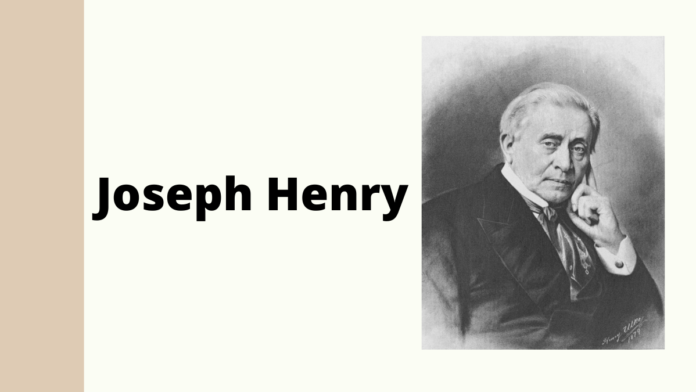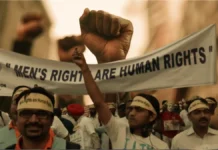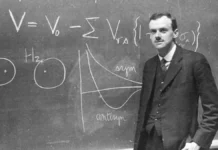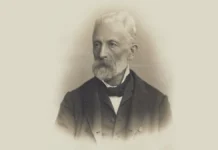
Joseph Henry, an American scientist, discovered the electromagnetic phenomenon of self-inductance while constructing electromagnets. He carried forward Michael Faraday’s mutual inductance. Henry developed electromagnets into a practical device and invented a precursor for electric doorbells (a doorbell that runs through electrical wires, and electric relays). The SI unit of inductance is named in his honor. Henry’s work on the electromagnetic relay was the basis of the practical electric telegraph, invented differently by Samuel F. B. Morse and Sir Charles Wheatstone.
Joseph Henry was considered very much during his lifetime, who is still a renowned scientist in the field of science. During his lifetime he was the first secretary of the Smithsonian Institution, a pioneer of the Smithsonian Institution, and secretary of the National Institute for the Promotion of Science.
Contents
Joseph Henry’s early life
Birth and Education –
Joseph Henry was born on December 17, 1797, in Albany, New York. His parents Ann Alexander Henry and William Henry were Scottish expatriates, his parents Ann Alexander Henry and William Henry being poor as a migrant. Henry was greatly hurt by his father’s death during his youth, to emerge from this situation, Henry lived with his grandmother in Galway, New York. He received his early education from that school, which was later named “Joseph Henry Elementary School” in his honor.
Henry’s career and discovery –
After school education, Henry began working in a general store, and by the age of thirteen became an apprentice watchmaker and silversmith. Joseph’s first love was theater, so he wanted to become a professional actor, but he was interested in science since the age of sixteen when he read the book “Popular Lectures on Experimental Philosophy“. In 1819, he attended Albany Academy, where he was given free tuition. He was so poor at the time, that he had to support himself with their tuition and private tuition positions with free tuition. He intended to go into medicine but In 1824, he was appointed an assistant engineer to survey the state road being built between the Hudson River and Lake Erie. Since then, he has been inspired for a career in either civil or mechanical engineering.
While at Albany Academy, Henry excelled in his studies so much that he often helped his teachers teach science, thus Henry being appointed Professor of Mathematics and Natural Philosophy at Albany Academy in 1826 by Principal T. Romyn Beck. He did some of his most important research while staying in this position.
His curiosity about terrestrial magnetism led him to experiment with magnetism in general. Henry was the first to demonstrate that the capacity of an electromagnet could be enhanced by tightly wiring around the iron core, which led to William Sturgeon improving on the loose-fitting electromagnet with no insulation wire. Using this technique, he created the strongest electromagnet for Yale University, at the time, he also showed that, when making an electromagnet using just two electrodes connected to a battery, several coils of wire in parallel were fed with air. Giving is best, but when using a set-up with multiple batteries, there should be only a single long coil. The latter made the telegraph possible. Some historians credited Henry with pre-dating Faraday and Hertz because of his early experiments in electromagnetism. However, Henry is not credited for not publishing his work.
In 1831, using his newly developed electromagnetic theory, Henry built one of the first machines to use electromagnetism for motion. It was the earliest ancestor of modern DC motors that did not use rotational motion but was merely an electromagnet bent on a pole. Rocking motion back and forth in this is caused by one of the two leads at both ends of the magnet rotating, touching one of the two battery cells, changing one polarity, and moving the opposite direction until the other two leads hit the other battery.
This tool of theirs helped them to identify the property of self-inductance. British scientist Michael Faraday also recognized this property around the same time. Since Faraday first published his results, he became an officially recognized explorer of the event.
From 1832 to 1846, Henry served as the first president of natural history at the College of New Jersey (now Princeton University). While at Princeton, he taught many courses including natural history, chemistry, and architecture, and also ran a laboratory on campus. Decades later, Henry wrote that he did “several thousand original investigations on electricity, magnetism, and electromagnetism” while at the Princeton faculty. Henry relied heavily on Sam Parker, an African American research assistant in his laboratory and experiments. Parker was a free black man appointed by the Princeton trustees to assist Henry. In an 1841 letter to the mathematician Elias Loomis, Henry writes that:
“The trustees have furnished me with an article, which I now find unavoidably with a colored servant, whom I have taught to manage my batteries and which now relieves me of all laboratory work.”
In his letters, Henry described Parker as providing material for experiments, fixing technical issues with Henry’s equipment, and several times as a test subject in electrical experiments in which Henry and his student Parker Will surprise in-class demonstrations. In 1842, when Parker fell ill, Henry’s experiments stopped altogether until he recovered.
Henry was appointed the first secretary of the Smithsonian Institution in 1846 and served in this capacity until 1878. In 1848, while secretary, Henry worked with Professor Stephen Alexander to determine the relative temperature of different parts of the solar disk. They used a thermopile to determine that the sunspots were cooler than the surrounding areas. The work was shown to the astronomer Angelo Cecchi who extended it but with some questions as to whether Henry was given due credit for the earlier work.
In late 1861 and early 1862, during the American Civil War, Henry supervised a series of lectures from prominent abolitionists at the Smithsonian Institution. Speakers included white clergy, politicians, and activists such as Wendell Phillips, Horace Grech, Henry Ward Beecher, and Ralph Waldo Emerson. Eminent speaker and former fugitive slave Frederick Douglass were scheduled as the final speaker; However, Henry refused to allow him to appear, saying: “I will not allow the colored man to lecture in the Smithsonian’s room.”
In 2014, history writer Jeremy T.K. Farley released “The Civil War Out My Window”, Mary Henry’s Diary. The 262-page book featured articles from Henry’s daughter Mary’s diary dating from the years 1855 to 1878. Throughout the diary, Henry is repeatedly mentioned by his daughter, who has shown deep affection for her father.
In 1860, Henry was a balloonist from New Hampshire, Prof. Thaddus met Lowe, who was interested in the phenomenon of lighter-than-air gases and meteorology, in particular, the high winds we today call jet streams. Lowe intended to create a transit range using a large gas-inflated aerostat. Henry took great interest in Lowe’s efforts and promoted among some of the more prominent scientists and institutions.
In June 1860, Lowe made a successful test flight with his giant balloon, first renamed New York City and later renamed The Great Western, flying from Philadelphia to Medford, New York. Lowe would not be able to attempt a transatlantic flight until late in 1861, so Henry persuaded him to move his balloon one point west and fly the balloon back to the eastern seaboard, a practice in which his investors Was interested.
Lowe carried several small balloons in March 1861 in Cincinnati, Ohio. On 19 April 1861, he launched on a spectacular flight that landed him at the Confederate South Carolina. During the winter and spring of 1861, and the beginning of the Civil War, with the southern states seceding from the Union, Lowe gave up further attempts at a trans-Atlantic crossing, and Henry’s as an aeronaut Moved to Washington, DC to serve. Henry handed a letter to the US Secretary of War during the time of Simon Cameron of Pennsylvania, supporting Henry.
It was Henry on whose recommendation Lowe formed the United States Army/”Union Army” Balloon Corps and served as a Civil War “aeronaut” with Potomac’s army for two years.
Later years of Joseph Henry.
As a noted scientist and director of the Smithsonian Institution, Henry received the support of other scientists and inventors, who sought his advice in his works. Henry was patient, polite, sober, and soft-witted. One such visitor was Alexander Graham Bell, who gave Henry a letter of introduction on 1 March 1875. Henry showed interest in seeing Bell’s experimental system. After the demonstration, Bell noted his unproven theory of how to electrically transmit human speech through a “harp mechanism”, which would have multiple spectra reads that would cover different frequencies to cover the voice spectrum. Let’s see. Henry stated that Bell had “the germ of a great invention”. Henry advised Bell not to publish his ideas until he had completed the invention. When Bell objected that he lacked the necessary knowledge, Henry strongly advised: “All right!”
On 25 June 1876, Beld’s experimental telephone (using a different design) was displayed at the Centennial Exhibition in Philadelphia where Henry was one of the judges for the electric display. On 13 January 1877, Bell performed his instruments to Henry at the Smithsonian Institution, and Henry invited Bell to exhibit them again that night at the Washington Philosophy Society. Henry “praised the value and surprising character of Mr. Bell’s discovery and invention.”
Death –
Henry died on May 13, 1878, and was buried in Oak Hill Cemetery in the Georgetown section of northwest Washington, D.C. John Phillips Susa wrote the Transit of Venus March to unveil the statue of Joseph Henry in front of the Smithsonian Castle.
Joseph Henry’s legacy and honor
Henry was a member of the Lighthouse Board of the United States from 1852 until his death. He was appointed chairman in 1871 and served the post for the remainder of his life. He was the only citizen to serve as chairman. The United States Coast Guard honored Henry for his work on the lighthouse and followed him by fog signal acoustics, named a cutter. Joseph Henry, commonly known as Henry, was initiated in 1880 and was active until 1904.
In 1915 Henry was inducted into the Hall of Fame for Great Americans in the Bronx, New York. Bronze statues of Henry and Isaac Newton represent science on the strength of the galleries of the main reading room in the Thomas Jefferson Building of the Library of Congress on Capitol Hill in Washington DC, two of the 16 historical figures depicted in the reading room. , Each pair represents one of the 8 pillars of civilization.
In 1872, John Wesley Powell named a mountain range in southeastern Utah after Henry. The Henry Mountains were the last mountain range to be added to a map of 48 contiguous American states. In Princeton, Joseph Henry Laboratories and Joseph Henry House are named for him.
After Albany Academy moved out of its downtown building in the early 1930s, it’s an old building at Academy Park was renamed the Joseph Henry Memorial, which housed its front statue. It is now the head office of the Albany City School District. In 1971 it was listed in the National Register of Historic Places; It was later included as a contributing property when the Lafayette Park Historic District was listed in the register.
In 1851 he was elected a member of the American Antiquarian Society. The District of Columbia named a school built in 1878–80 on P Street between 678 and 7th Joseph Henry School. It was demolished sometime after 1932. The Henry Mountains (Utah) was named by geologist Almon Thompson in his honor.
Sources
- “A Brief History of Electromagnetism”
- “Planning a National Museum”. Smithsonian Institution Archives. Archived from the original on 3 August 2009. Retrieved 2 January 2010.
- “Joseph Henry”. Distinguished Members Gallery, National Academy of Sciences. Archived from the original on 2006-12-09. Retrieved 2006-11-30.
- Scientific writings of Joseph Henry, Volume 30, Issue 2. Smithsonian Institution. 1886. p. 434.
- Alexander Graham Bell and the Conquest of Solitude, Robert V. Bruce, pp. 139–140
- Alexander Graham Bell and the Conquest of Solitude, Robert V. Bruce, p. 214
- Baird, Spencer Fullerton (1911). “Henry, Joseph”. In Chisholm, Hugh (ed.). Encyclopædia Britannica. 13 (11th ed.). Cambridge University Press. pp. 299–300.
- Finding aid to the Joseph Henry collection at the University of Pennsylvania Libraries
- The Joseph Henry Papers Project
- Finding Aid to the Joseph Henry Collection
- Biographical details — Proceedings of the National Academy of Sciences (1967), 58(1), pp. 1–10.
- Dedication ceremony for the Henry statue (1883)
- Published physics papers — On the Production of Currents and Sparks of Electricity from Magnetism and On Electro-Dynamic Induction (extract)
- Joseph Henry Collection, Smithsonian Institution
- National Academy of Sciences Biographical Memoir
FACT CHECK: We strive for accuracy and fairness. But if you see something that doesn’t look right, please Contact us.
DISCLOSURE: This Article may contain affiliate links and Sponsored ads, to know more please read our Privacy Policy.
Stay Updated: Follow our WhatsApp Channel and Telegram Channel.











